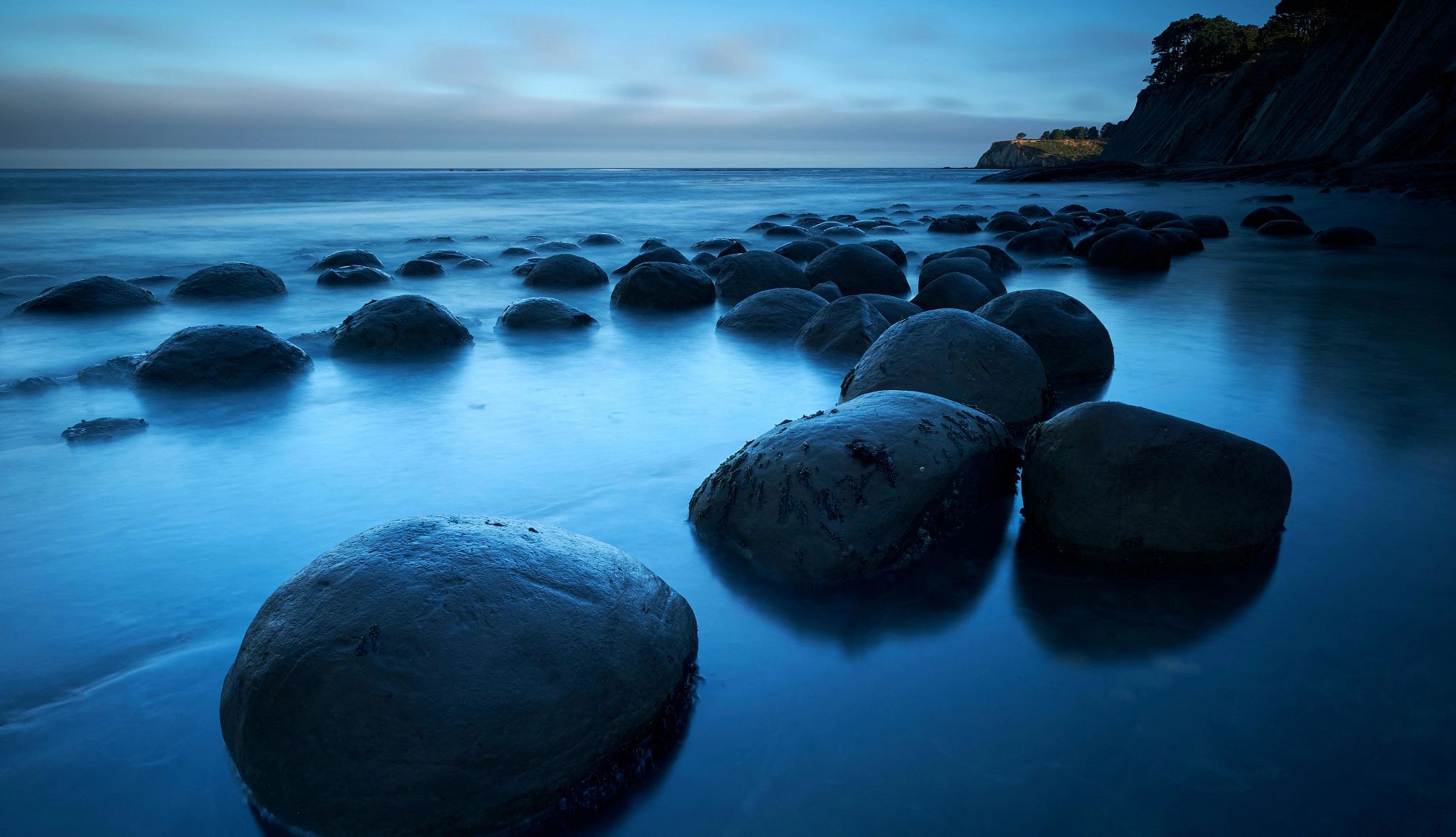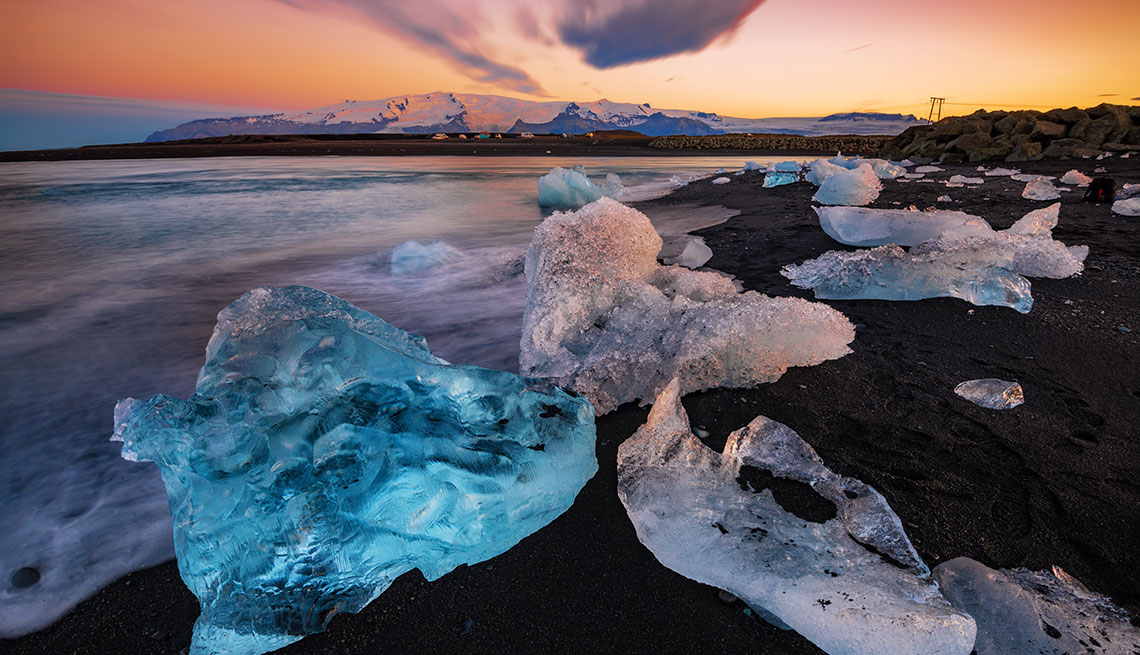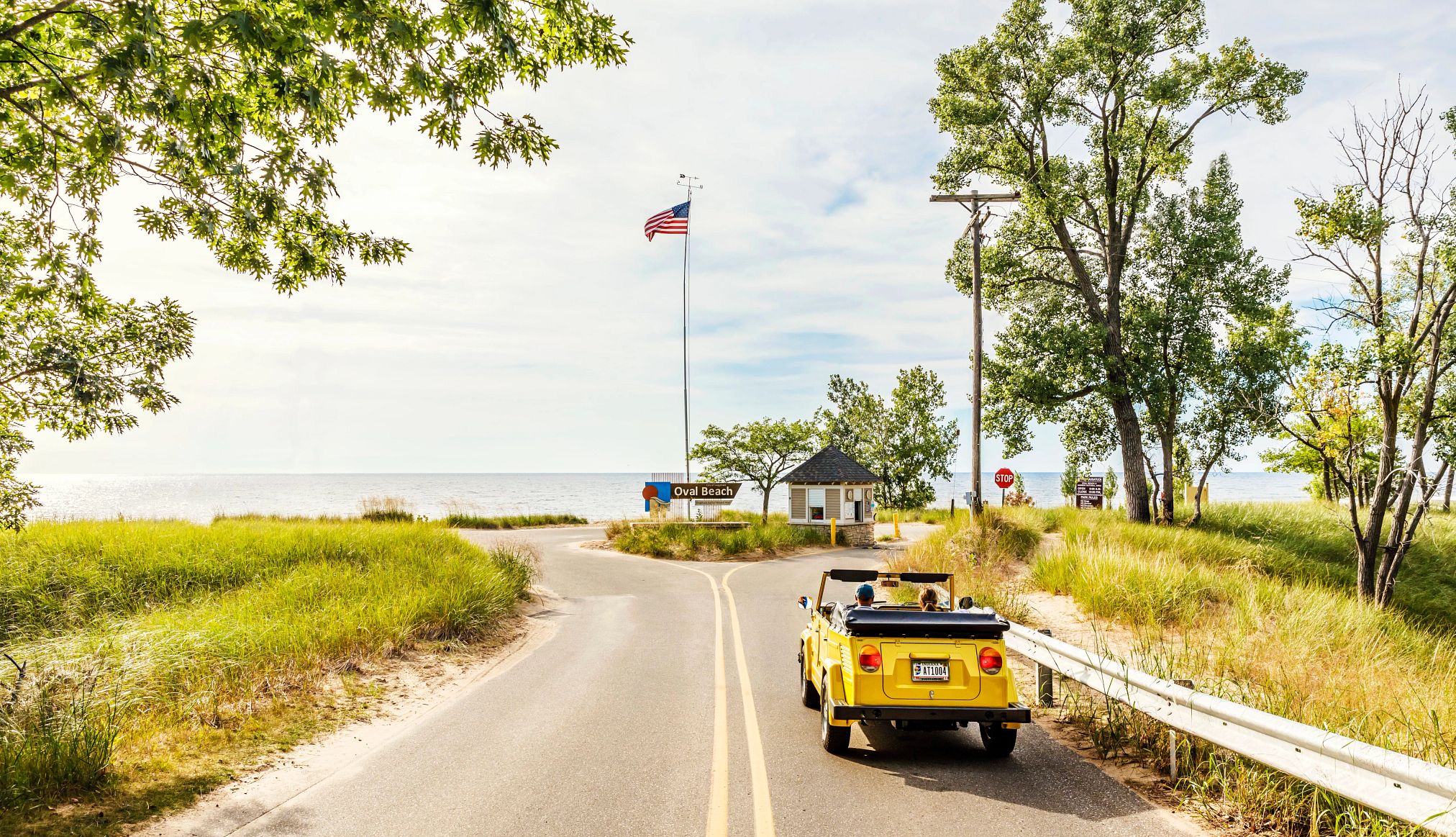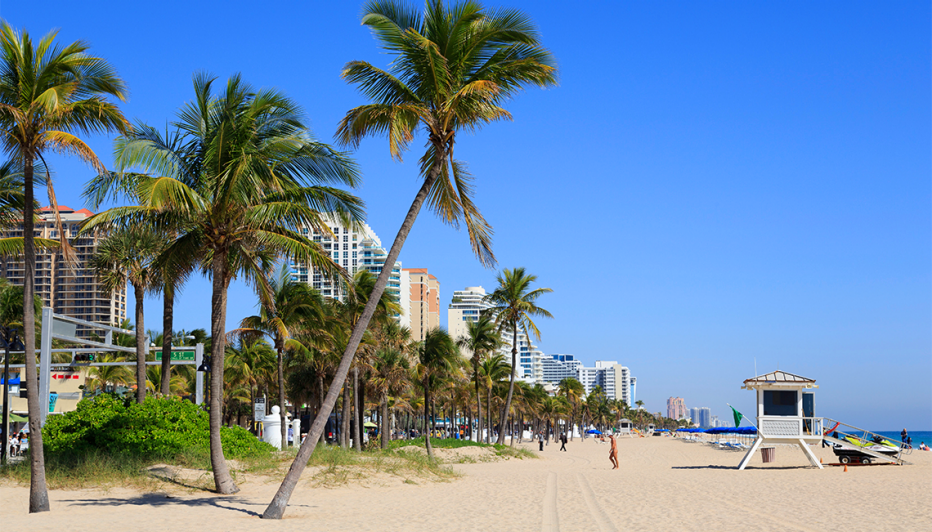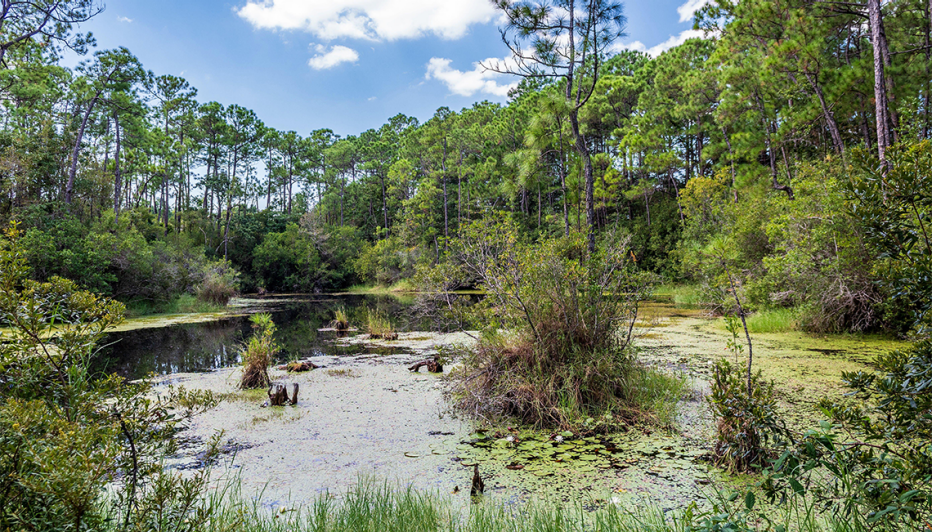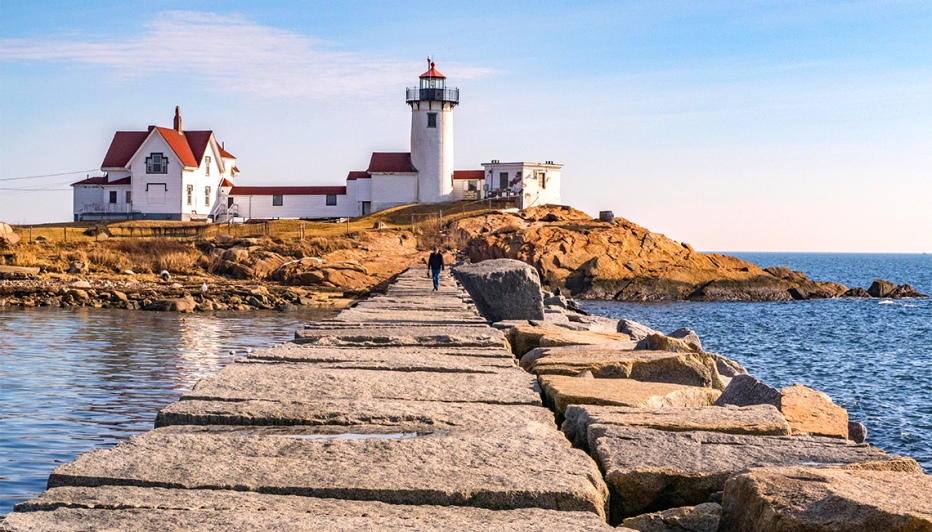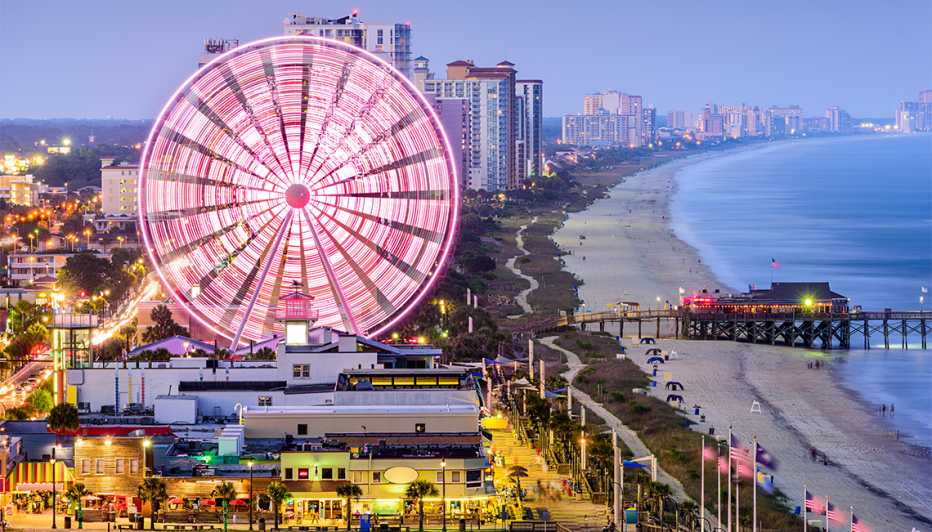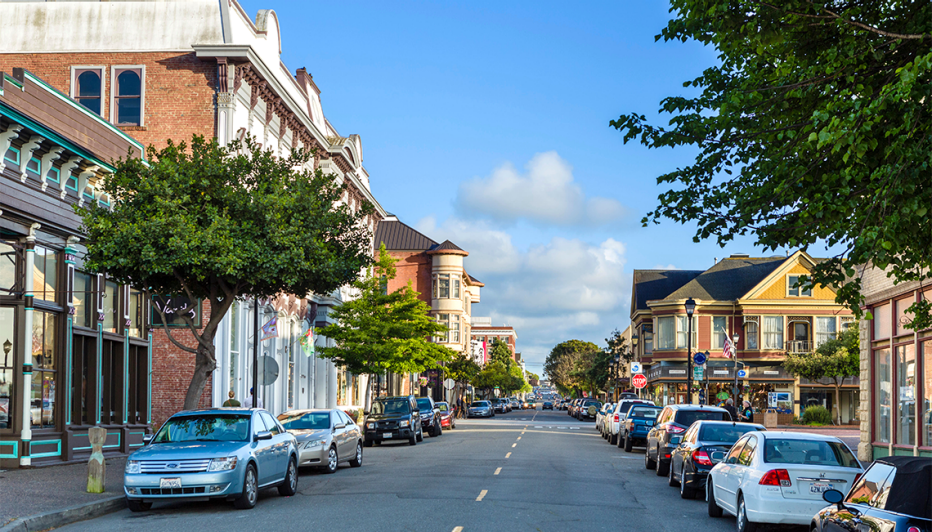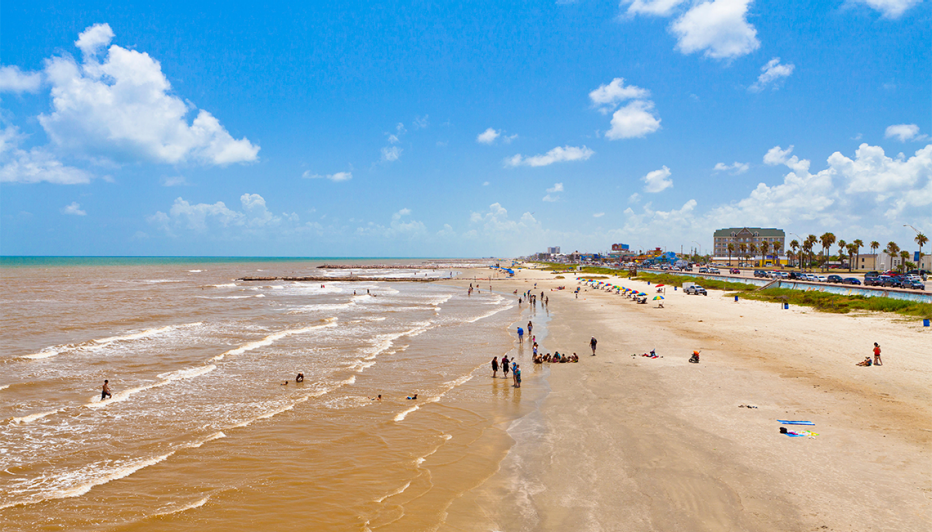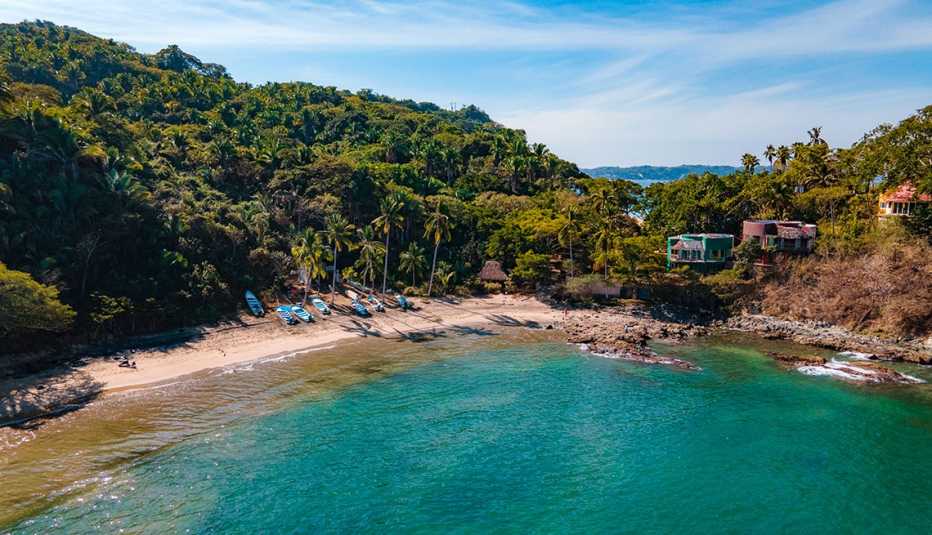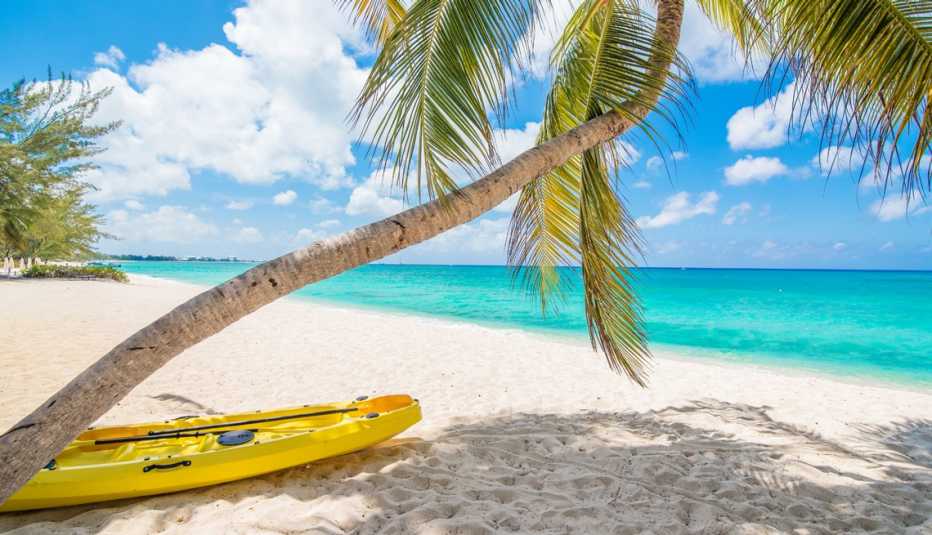Myrtle Beach, South Carolina
With 60 miles of beach to choose from, there’s a strand for every mood in super-social Myrtle Beach. The Myrtle Beach Area Convention & Visitors Bureau says nearly half of the U.S. population lives within a day’s drive of the coastal city, encouraging spontaneous road trips.
What to do: The best place to start for toes-in-the-sand fun is the 1.2-mile-long Oceanfront Boardwalk and Promenade, home to attractions including the 200-foot-tall SkyWheel (adults $19.99; $20.99 after 5 p.m.). In North Myrtle Beach, take a free class in “shag” dancing, a style of swing dancing, at Fat Harold’s Beach Club and stick around town for the free fireworks displays at the entertainment complex, Broadway at the Beach, weekly in the summer. South of town, don’t miss Brookgreen Gardens (admission $22; $20 for people 65 and older) covering more than 9,100 acres, including 250-year-old live oaks and an impressive sculpture garden with more than 2,000 works of art.
Where to stay: The Palace Resort oceanfront suites feature kitchens and access to two swimming pools and a white sand beach.
The city of Eureka, California, is an affordable base for day trips along the coast.
Alamy
Eureka, California
On Humboldt Bay in Northern California, the Victorian city of Eureka makes a diverting base for trips along the “redwood coast,” 175 miles of Pacific shore shared by some of the tallest trees on Earth, a destination for beachcombers, driftwood collectors, birdwatchers and food fans.
What to do: The peninsula that protects the bay from the open ocean is lined with miles of protected dunes easily accessed by walking trails from the Humboldt Coastal Nature Center. In town, the Audubon Society holds free monthly bird walks along the 6.5-mile Eureka Waterfront Trail. Take the scenic coastal Highway 101 north about 50 miles to Prairie Creek Redwoods State Park to hike Gold Bluffs Beach and look for seals and snowy plovers. Back in town, splurge on oysters and shrimp at The Sea Grill.
Where to stay: The family-run Seadrift Inn has rooms with microwaves, refrigerators and coffee makers, and is located in a sweet spot between the beaches and Old Town Eureka.
It costs zero dollars to access miles of sandy shore in Galveston, Texas.
Alamy
Galveston, Texas
The city of Galveston offers access to 32 miles of shore along barrier Galveston Island, home to a series of Gulf Coast beaches and attractions, including a historic pier and tranquil nature preserves.
What to do: Ten miles of beach border Galveston’s historic Seawall sidewalk. Head to the lively East Beach during the annual sandcastle competition to see elaborate, ephemeral art. Nature lovers appreciate waterfront Galveston Island State Park for hiking, seabird viewing and fishing. In town, tour some of the impressive mansions that testify to the port’s early shipping wealth — Galveston was once nicknamed the “Wall Street of the South” — including the ornate 1892 Bishop’s Palace ($15) and stroll colorful Postoffice Street to window-shop art and antiques galleries.
Where to stay: Gaido’s Seaside Inn offers simple but clean rooms across the street from the beach and about a 10-minute walk to the Galveston Island Historic Pleasure Pier (note: you need to buy a Pier Pass if you want to walk around the pier; $12 for adults, $10 for adults 65-plus).
Visitors can enjoy miles of coastline for free in Melbourne, Florida.
Alamy
Melbourne, Florida
A beach community on Florida’s 72-mile-long Space Coast — named for the rocket launches that have been taking place here since the 1950s — Melbourne offers a balance of nature and culture about an hour’s drive southeast of Orlando.
What to do: The Indian River Lagoon separates mainland Melbourne from its barrier island beaches, popular with surfers and beachcombers. Among several reserves along the coast, nature lovers can look for birds, sea turtles and manatees at Canaveral National Seashore, the longest stretch of undeveloped Atlantic coastline in the state ($25 admission per vehicle, good for seven days). In Melbourne, the pedestrian-friendly downtown, filled with local restaurants and shops, offers a DIY art tour of public murals.
Where to stay: Close to the ocean and its sunset views, SeaGlass Inn Bed & Breakfast offers cozy rooms in a 1915 former boardinghouse with a courtyard featuring a swimming pool and shady mango trees.
A trip to Honolulu should include Diamond Head, which is seen in the distance.
Getty Images
Honolulu
The biggest city in the Aloha State is the best place to look for a bargain in the Hawaiian Islands while exploring everything that makes the destination distinct, including inviting beaches, coastal scenery and Indigenous culture.
What to do: Greet the sunrise at Diamond Head, the iconic volcanic cone that bookends Waikīkī (admission $5 and requires a reservation ). Break away from Waikīkī Beach to spend an hour or two visiting Honolulu’s historic downtown, including ‘Iolani Palace, the 19th-century home of Hawai‘i’s royal family, with Hawaii Free Tours (the tours are free, but expect to tip the guide). Pay homage to the World War II fallen at Pearl Harbor National Memorial (reservations, which cost $1, are encouraged ). Visit the Royal Hawaiian shopping center for free musical and hula performances staged nearly every day.
Where to stay: For easy access to Waikīkī Beach, check out the Aston Waikiki Circle Hotel, a 14-story high-rise with balcony guestrooms just across the street.
Isla Verde Beach is minutes away from the airport in San Juan, Puerto Rico.
Alamy
San Juan, Puerto Rico
An atmospheric colonial capital, San Juan brings history to the classic beach idyll on one of the Caribbean’s most easy-to-reach islands, Puerto Rico.
What to do: Travelers landing at the island’s main airport will find themselves minutes from San Juan’s best beaches, including broad Isla Verde and the restaurant-and-hotel-lined Condado. For a culinary beach experience, visit Piñones, a nearby coastal area renowned for its street food stalls. Old San Juan offers a time traveler’s change of pace with colonial buildings dating to its 16th-century roots as a European outpost. Explore the imposing Castillo San Felipe del Morro fortress (admission $10) and take the Paseo del Morro boardwalk to stroll between its massive fort walls and the Bay of San Juan. Within the cobblestone-paved quarter, don’t miss Calle Fortaleza, a photogenic street often covered in colorful canopies, and stop into Barrachina, the purported birthplace of the piña colada.
Where to stay: The 19-room Decanter Hotel resides in a 19th-century building with a rooftop bar offering views over the surrounding neighborhood of Old San Juan.
Editor's note: This article was originally published on May 26, 2023. It has been updated to reflect new information.

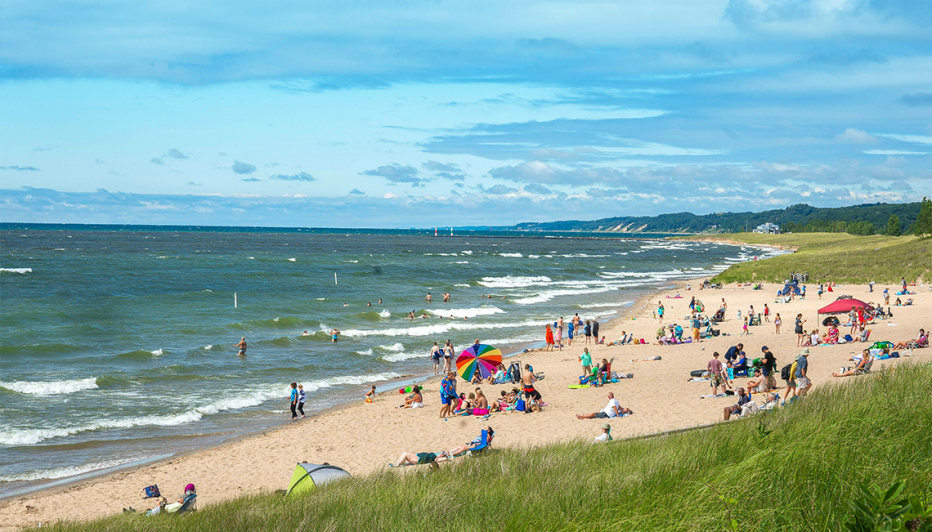































































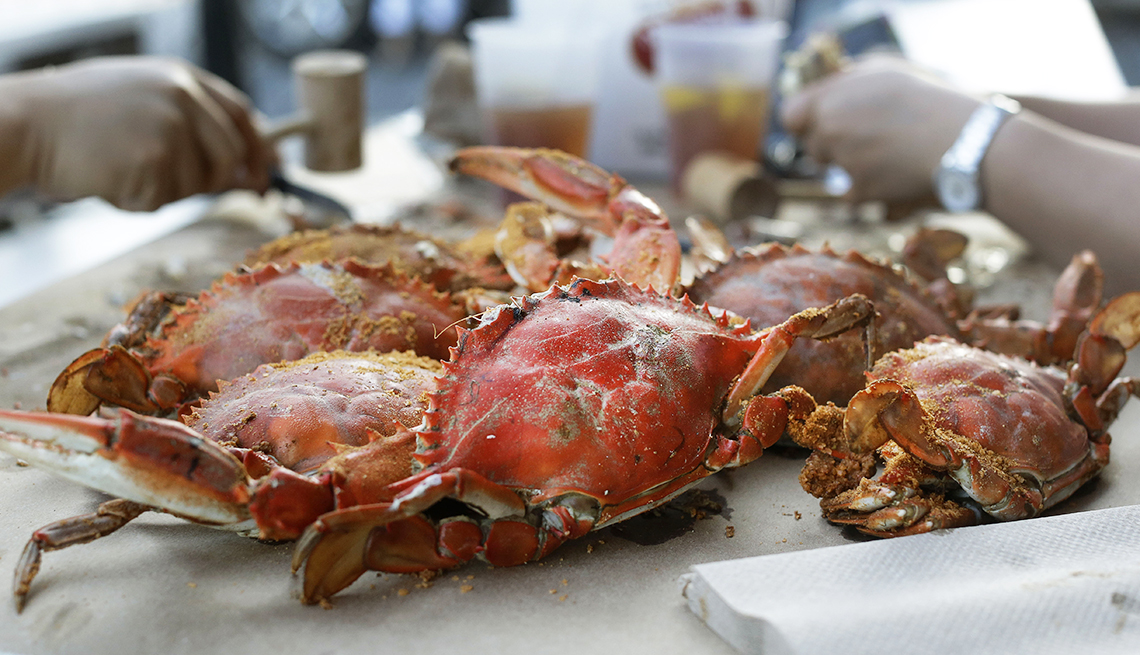


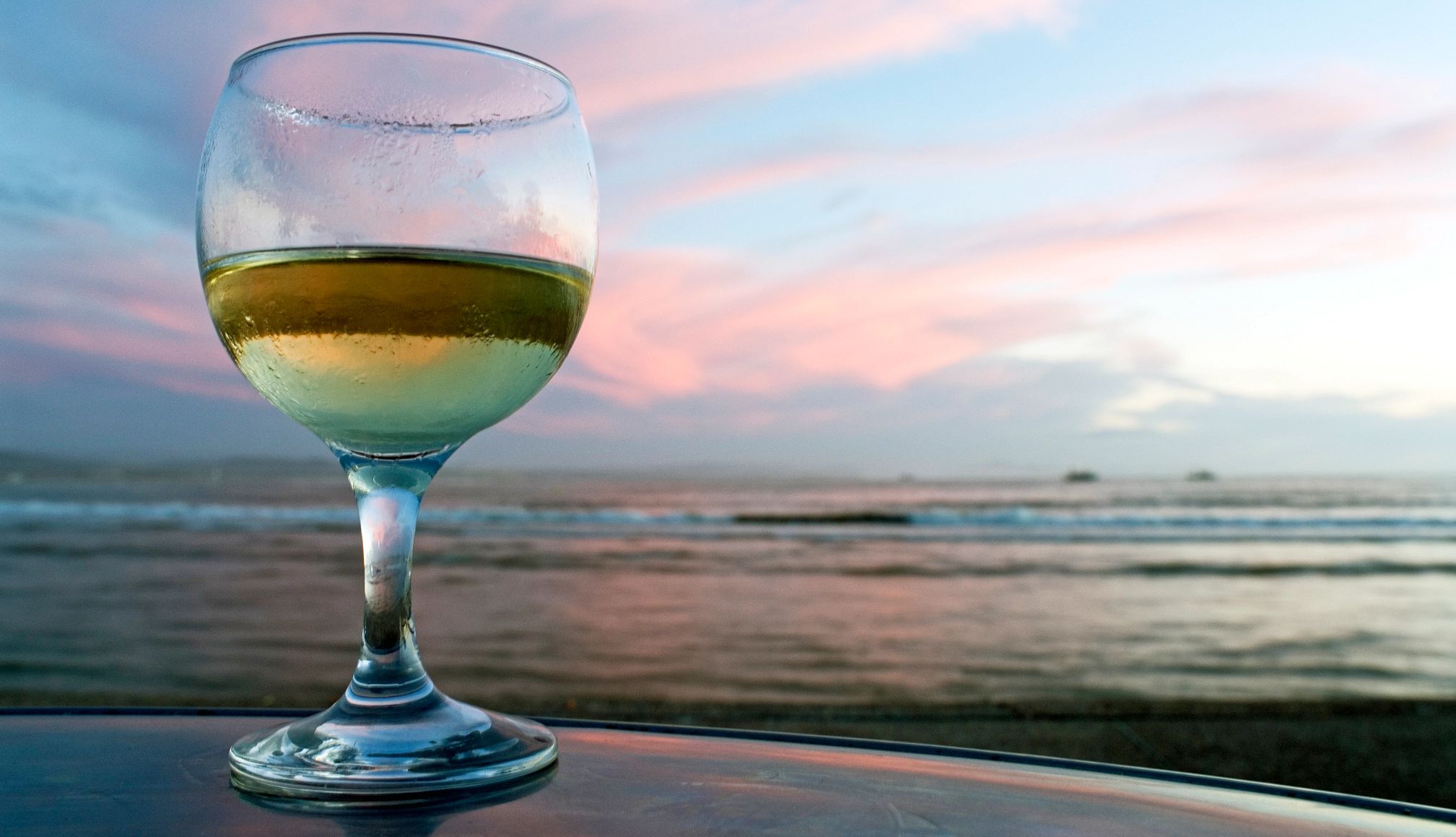
.jpg?crop=true&anchor=12,12&q=80&color=ffffffff&u=2xkwh0&w=2012&h=1156)
.jpg?crop=true&anchor=10,180&q=80&color=ffffffff&u=2xkwh0&w=2021&h=1161)

